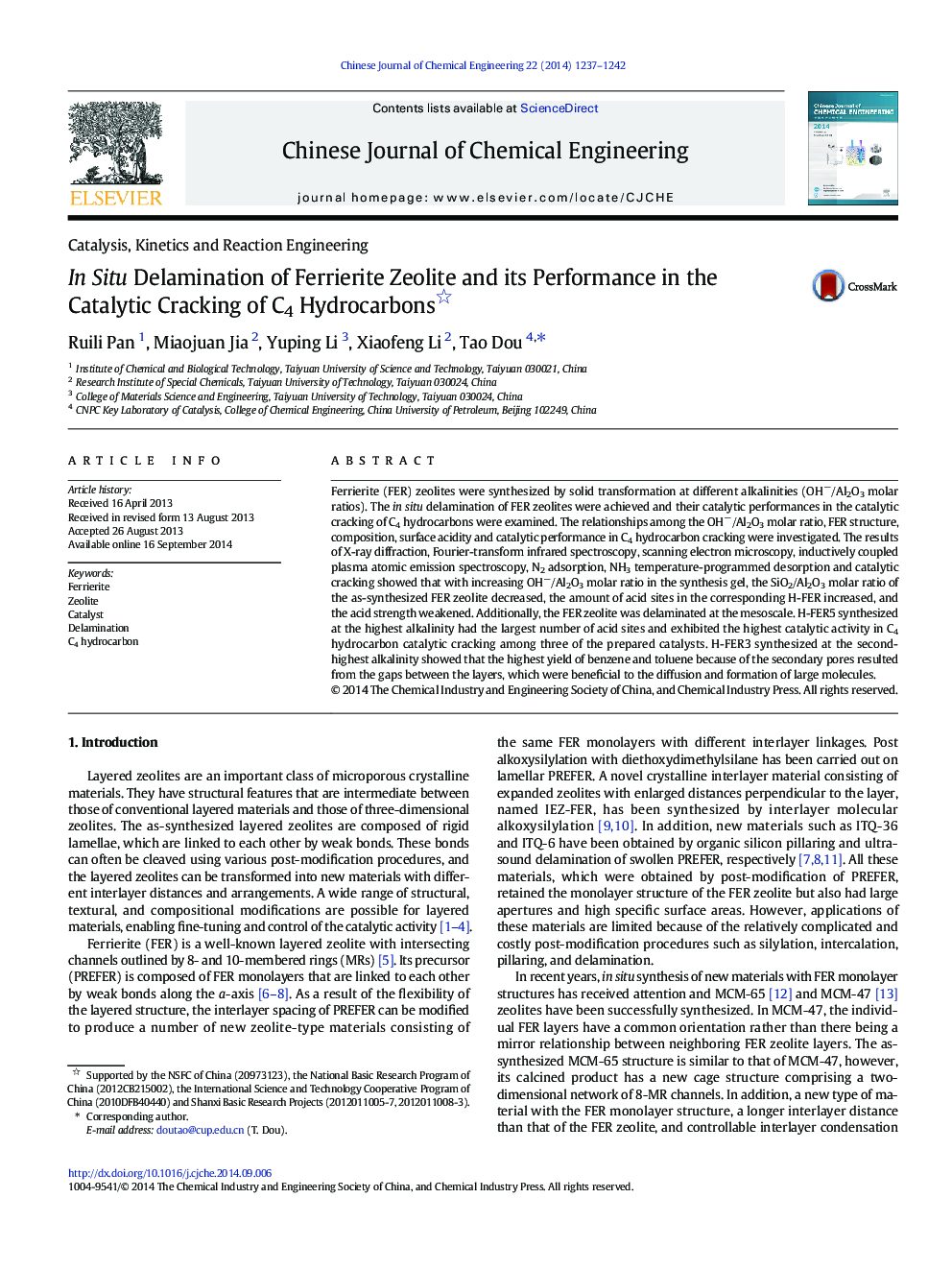| کد مقاله | کد نشریه | سال انتشار | مقاله انگلیسی | نسخه تمام متن |
|---|---|---|---|---|
| 168227 | 1423405 | 2014 | 6 صفحه PDF | دانلود رایگان |

Ferrierite (FER) zeolites were synthesized by solid transformation at different alkalinities (OH−/Al2O3 molar ratios). The in situ delamination of FER zeolites were achieved and their catalytic performances in the catalytic cracking of C4 hydrocarbons were examined. The relationships among the OH−/Al2O3 molar ratio, FER structure, composition, surface acidity and catalytic performance in C4 hydrocarbon cracking were investigated. The results of X-ray diffraction, Fourier-transform infrared spectroscopy, scanning electron microscopy, inductively coupled plasma atomic emission spectroscopy, N2 adsorption, NH3 temperature-programmed desorption and catalytic cracking showed that with increasing OH−/Al2O3 molar ratio in the synthesis gel, the SiO2/Al2O3 molar ratio of the as-synthesized FER zeolite decreased, the amount of acid sites in the corresponding H-FER increased, and the acid strength weakened. Additionally, the FER zeolite was delaminated at the mesoscale. H-FER5 synthesized at the highest alkalinity had the largest number of acid sites and exhibited the highest catalytic activity in C4 hydrocarbon catalytic cracking among three of the prepared catalysts. H-FER3 synthesized at the second-highest alkalinity showed that the highest yield of benzene and toluene because of the secondary pores resulted from the gaps between the layers, which were beneficial to the diffusion and formation of large molecules.
FER zeolites were synthesized using a solid-transformation method. The in situ delamination of FER zeolites at the mesoscale was achieved by adjusting the alkalinity of the synthesis gel (OH−/Al2O3 molar ratio). The FER catalysts delaminated at the mesoscale showed some of the characteristics of those delaminated at the microscale: they promoted the diffusion and formation of large molecules. This is a novel method for in situ modification of layered zeolites.Figure optionsDownload as PowerPoint slide
Journal: Chinese Journal of Chemical Engineering - Volume 22, Issues 11–12, November 2014, Pages 1237–1242